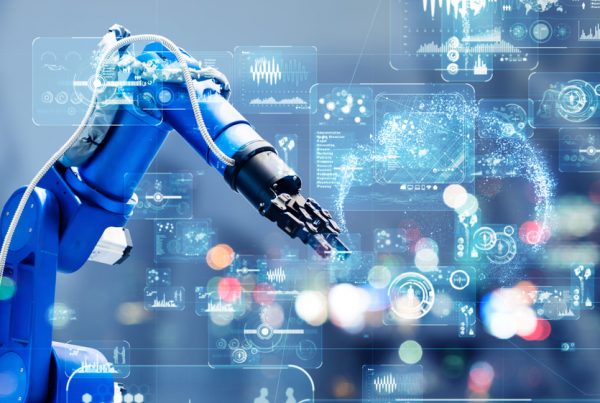Organisations should look at building a robust artificial intelligence strategy to imbibe the technology in the way they operate
Disruptive new-generation technologies are seen to have dramatically changed the way businesses run. Enterprises are considering realigning their strategies to retain their market position, and gain advantages through cutting-edge technologies like artificial intelligence (AI), robotics and IoT. Companies adopting the new-age exponential technologies earlier have a better chance of staying ahead of the curve and competition. With its potential to augment the capabilities of humans, and help businesses improve productivity, AI has the power to transform businesses across industries and sector.
AI AT THE CORE
In the wake of the fourth industrial revolution, artificial intelligence and automation are the new norm for today’s enterprise. What once was a competitive edge is now becoming a prerequisite for business growth, efficiency and productivity. It is no longer enough to just implement AI; it is about ensuring that AI is effectively integrated across all business platforms.
The focus needs to move away from what technologies are being offered and instead focus on how these technologies are impacting a company’s specific use-cases and enhancing their outcomes. The goal should be to build an AI-enabled organisation and not look at AI as an add-on.
Organisations should look at building a robust AI strategy to imbibe AI in the way they operate. Forrester reports that 40 “insight-driven companies” are going to grab $1.8 trillion by 2021. In this list we have young companies that are less than 8 years old.
What unifies them? Their obsession with data and AI. There are essentially two types of organisations with respect to AI adoption — first, the “talkers”: there are organisations wetting their feet with AI initiatives taking small risk-averse steps in organisational silos and in some cases getting tangled by bureaucracies; and a minority few unfortunately focusing more on press coverage than actual outcome. Then the “Do-ers”: These are the insights-driven companies, that have integrated or are on a strong path to integrate analytics and AI into their organisational fabric. These organisations have a holistic approach to “AIenabled value chain”.
EXPERIMENT
With AI, every organisation will generally make some bad bets. Not only is acceptance of failure key, but failure in AI/ML isn’t binary. Sometimes pilots are technological successes but yield few benefits and vice versa. Building enterprise-scale AI is not easy and there are several obstacles teams face before putting the models in production. Some of the top reasons for failed PoCs include: Vendors failing to prove the concept as originally conceived Concept not delivering the expected outcome in terms of value Fails to satisfy the intended stakeholders Results do not add tangible value Enterprises have to perform a series of health checks before putting the models in production.
AUGMENT HUMAN POTENTIAL
The role of AI in the near future would be to augment human potential and enable them to perform more strategic tasks.
Artificial intelligence is acting as an “invisible hand” in revolutionising the healthcare sector. AI-based cancer radiology platforms are helping radiologists and surgeons to accurately and quickly diagnose and size the cancerous tissue to help plan personalised treatment. This is expected to not only dramatically improve the productivity of the small community of dedicated radiologists but also improve clinical outcomes of treatment and reduce patient mortality.
The biggest area where AI is seen making its presence felt is in automating previously manual and time-consuming processes that, while necessary, are a big drag on corporate bottom lines. For companies that have large supply chains with millions of orders or purchases to process, handling invoicing and procurement processes can be a significant drag. Increasingly, enterprises are putting AI in supply chain processes, using tools like computer vision to handle invoices and process automation tools to handle moving information across disparate systems.
These are all a few examples of how AI is already being used to augment our knowledge and our ability to seek and find answers.
JOB LOSS AND SKILL GAP
The number of robots deployed by Indian firms has witnessed a 200-fold increase since the turn of the 21st century. Though with one of the lowest robot densities in the world, India may have less to worry at the moment compared to other economies.
However, considering the pace of change, India, and its professionals, as well as students, cannot afford to continue living in the 1991 era, where one degree and one-time education is going to last through their entire working career.
Smarter enterprises relentlessly innovate by investing in talent through various learning and development programmes, embracing and encouraging diversity, and ensuring all employees are digitally savvy. It is important to recognise that the approach to talent management and retention cannot be the same as it was in the past. The nature of work is rapidly changing. These new digital technologies aren’t just disrupting markets and organisations, they’re creating new roles, augmenting existing ones, and rendering others redundant.
At the moment, India is facing a twoforked problem — scores of graduates who need to be skilled in technologies that companies want to hire and millions of professionals with skill sets that are becoming redundant at a rapid pace who need to upskill.
COLLABORATION
Industry and academia have collaborated in AI research for decades. Most existing arrangements between industry and academia are either “acquihire,” to attract the brightest minds in academia to participate, or “acquire,” which effectively end collaborations by hiring these bright minds away from academia and thus cannibalising the future pipeline to serve the needs of the present.
A new working model between industry and academia is needed, one in which stable, long-term industry-academic partnerships enable continued AI advancement while preserving our society’s capacity to conduct fundamental research and train future generations of AI experts.
THE BOTTOM LINE
We live in a time of exponential change. Everything we see today will soon be conventional knowledge. AI transformation is expected to be the most strategic subject to be tackled by organisations today. Successful transformations will ensure enterprises go beyond mere automation and cost-cutting strategies and unveil previously unseen business and revenue opportunities. Organisations will have to work towards putting humans in the loop — rethinking work architecture, retraining people, and rearranging the organisation to leverage technology to transform into a smart business.
- This article has been compiled with invaluable industry insights shared by the following ET ILC Members
- Padmanabhan Iyer, Managing Director and Global CEO, 3i Infotech
- Debdeep Sengupta, President and Managing Director, SAP India
- Anil Gupta, Chairman, NEC Technologies.
- Sumanta Datta, Managing Director and Cluster Head for India and South West Asia, Logitech
- Anil Valluri, CEO, India and SAARC, NetApp










